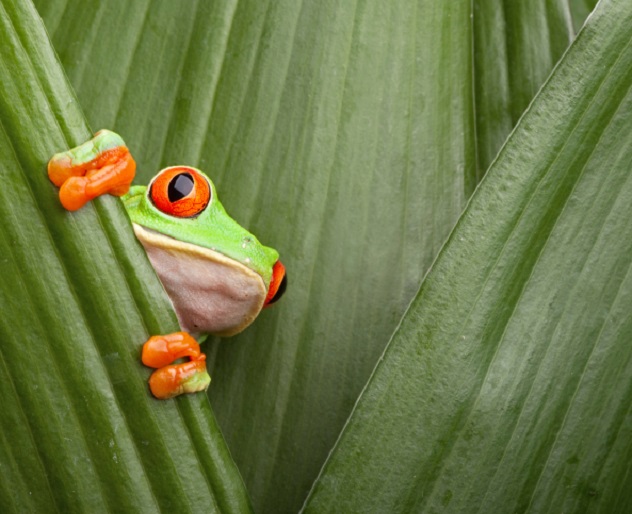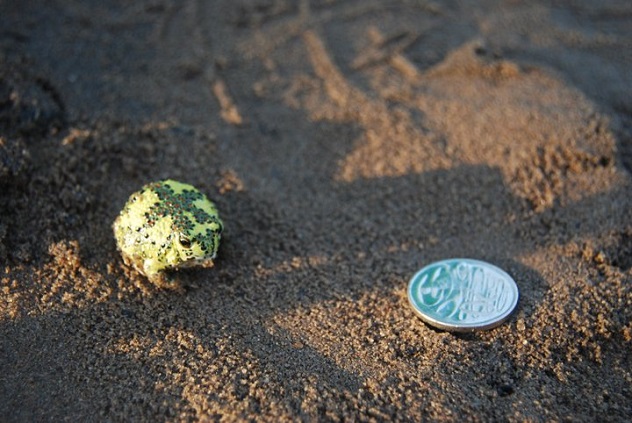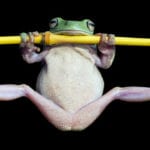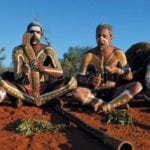 Animals
Animals  Animals
Animals  Weird Stuff
Weird Stuff 10 Weird Things People Used to Do at New Year’s
 Our World
Our World 10 Archaeological Discoveries of 2025 That Refined History
 Weird Stuff
Weird Stuff 10 Fascinating Facts You Might Not Know About Snow
 Miscellaneous
Miscellaneous Top 10 Things Crypto Was Supposed to Change & What Actually Did
 History
History 10 Huge Historical Events That Happened on Christmas Eve
 Music
Music 10 Surprising Origin Stories of Your Favorite Holiday Songs
 History
History 10 Less Than Jolly Events That Occurred on December 25
 Weird Stuff
Weird Stuff 10 Funny Ways That Researchers Overthink Christmas
 Politics
Politics 10 Political Scandals That Sent Crowds Into the Streets
 Animals
Animals 10 Species That Refused to Go Extinct
 Weird Stuff
Weird Stuff 10 Weird Things People Used to Do at New Year’s
 Our World
Our World 10 Archaeological Discoveries of 2025 That Refined History
Who's Behind Listverse?

Jamie Frater
Head Editor
Jamie founded Listverse due to an insatiable desire to share fascinating, obscure, and bizarre facts. He has been a guest speaker on numerous national radio and television stations and is a five time published author.
More About Us Weird Stuff
Weird Stuff 10 Fascinating Facts You Might Not Know About Snow
 Miscellaneous
Miscellaneous Top 10 Things Crypto Was Supposed to Change & What Actually Did
 History
History 10 Huge Historical Events That Happened on Christmas Eve
 Music
Music 10 Surprising Origin Stories of Your Favorite Holiday Songs
 History
History 10 Less Than Jolly Events That Occurred on December 25
 Weird Stuff
Weird Stuff 10 Funny Ways That Researchers Overthink Christmas
 Politics
Politics 10 Political Scandals That Sent Crowds Into the Streets
10 Frogs With Freakish Superpowers
Frogs and toads might seem lazy and unimpressive at first glance, but they actually possess some extraordinary abilities found nowhere else in nature. Those slimy critters that you used to drop down your sibling’s shirt are astounding researchers and are contributing to medical advancement in many unexpected ways.
10 Mega Morphine

Before hunting, the Matses Indians of Peru use the secretions of the waxy monkey tree frog (Phyllomedusa sauvagii) to “feel like gods.” This greasy little amphibian produces a substance that is 40 times more potent than morphine, which equals a heck of a lot of pain relief. It also doesn’t have any of the nasty side effects of morphine like suppressed breathing or addiction.
Researchers are trying to turn this secretion into a safe drug that could revolutionize medicine. Racehorse owners are already way ahead of the curve on this one, though. Dermorphin, the active ingredient in these secretions, has recently been found in racehorses throughout the nation. This is almost certainly illegal, as a horse with boundless energy and that isn’t affected by pain probably has an unfair advantage on the track.
9 Super Bladder

In 2010, Australian researchers noticed that the radio trackers they were inserting into frogs were getting pushed out somehow. After extensive testing, they discovered that a frog’s bladder will envelope any foreign object in the body. The Australian green tree frog (Litoria caerulea), for example, would pee out a bead in around 19 days.
And to further put all that into perspective, consider that they were 2-centimeter-long (0.8 in) transmitters that had been stuffed into 8-centimeter-long (3 in) frogs. So really it’s more like pushing out a cannon ball, or something else that’s rock hard and about 25 percent of your height. Scientists say it makes sense because frogs are apparently very squishy, kind of clumsy, and more than a little dumb. If they get jabbed by something while hopping around, they’d have to have a way to clean out their bodies. Currently, no other animal is known to urinate out boulders that get lodged in their bodies.
8 Power Tongue

The horned frog of South America (genus Ceratophrys) is also known as the Pac-man frog because of its huge mouth. These colorful little things are renowned for their voracious appetites and mean dispositions. They’ll eat anything, including but not limited to insects, rodents, snakes, other frogs, lizards, and even small birds. By using its tongue, the horned frog will grab unsuspecting prey and yank it back into its cavernous maw for consumption. This is a pretty impressive feat when you consider the size of the creatures it gobbles. Researchers wanted to know just how strong their tongue was. Tests show that their mouth tentacle can generate forces that are “1.4 times their own body weight.” That’s like jerking a 180-kilogram (400 lb) cow into your mouth. One particularly burly frog could pull an astonishing three times its own weight with its tongue.
7 Earth Sense

We humans, the most intelligent, technologically advanced, and best-looking species on this planet cannot detect an earthquake before it happens. We just haven’t been able to figure it out. Animals, on the other hand, usually start freaking out hours in advance. But that’s nothing compared to frogs. They can know the big one is coming five days before it actually hits. Researchers in Italy were studying a population of frogs during mating season. Then all of the frogs got up and left. They just disappeared. The weather was fine, and nothing was noticeably disturbing the frogs. They had fled for no apparent reason. And then a few days later, a massive earthquake hit.
No one knows exactly what the frogs are sensing that clued them in, but NASA has an idea. Before an earthquake hits the pressure beneath the surface of the earth creates chemical changes that release positively charged ions. These can cause headaches and nausea in animals and humans. They can also react with water creating hydrogen peroxide. It’s possible that frogs are sensing chemical changes that are causing them to run away from the water. But this is still just a best guess. For all we know, frogs are psychic.
6 Mega Adhesives

Tearing a ligament is one of the most common orthopedic injuries, and unfortunately “less than 10 percent can be repaired with current techniques, which involve suturing.” Fortunately, frogs may have an answer. The Holy Cross frog (Notaden bennettii) of Australia produces the strongest nontoxic glue in the world. Holy Cross frogs live underground for nine months out of the year. Since they live in a desert, they only come up when it rains. That’s also when nasty biting insects come out to attack. With this gluey substance secreted all over the frog’s skin, the insects can’t bite the frog and instead find themselves trapped. Later, the frog sheds its skin and eats all of the flies that got trapped.
This quick-drying glue might be the answer to a lot of problems for surgeons. By peeling the slime off one of these frogs, knee surgery might become quick and easy affairs. Most glues can’t be used in the body because they’re full of poisons, and all the nontoxic medical glues we have are pretty weak. But it was discovered that the secretions of the Holy Cross frog are both nontoxic and extremely strong. It also sets very quickly, in around 30 seconds in either open air or underwater. Soon you might see pasty frogs sitting on the surgery table ready to ooze for you.
5 Panacea

One interesting Russian tradition says you should throw a frog in your milk to keep it from spoiling. In a time before refrigeration, that was a small price to pay. So how did a drowned amphibian help keep the cream fresh? Frog skin is covered in miraculous antibacterial substances that can cure just about anything, it seems. The Australian red-eyed tree frog (Litoria chloris, pictured) produces peptides that poke holes in the HIV virus, causing it to fall apart. It can literally wash the HIV from an infected cell.
The foothill yellow-legged frog (Rana boylii) of California is being studied for its potential in fighting MRSA, the superbug that keeps making the news for breaking out in hospitals. Researchers are currently testing the slime from the backs of waxy monkey frogs to fight cancer. The waxy monkey frog makes a special chemical that inhibits the growth of blood vessels. Cancer tumors need new blood vessels to continue to grow, and this chemical might help starve them, preventing it from growing out of control. The list of medical uses for the gunk scrapped off frogs goes on and on. And on top of that you can leave your milk out for days.
4 Hyper Hearing

Let’s say you’re in the club where the music is blaring and you want to chat up the pretty lady way on the other side of the room. If the two of you were concave-eared torrent frogs, you wouldn’t have to move. You could speak to her from where you were standing, and she’d hear you just fine. These amazing frogs (Odorrana tormota) can tune their ears to specific frequencies like we dial in a radio station. It’s the only animal on the planet we know of that can do this. Most of us just hear a range of sounds. The torrent frog can pick and choose what part of the range they want to listen to. And they’re one of only a handful of animals on the planet that can communicate in ultrasound, which cuts through the roar of the noisy waterfalls and rapids they live near. The concave-eared torrent frog’s hearing is also extremely accurate. A male can leap to the sound of a female with an error rate of less than 1 percent, which is far better than any other amphibian in the world. Researchers think they might even use their ultrasonic ribbits like bats to find their way around in the dark.
3 Summon Water Out Of Thin Air

If there’s one thing every frog needs, it’s water (and lots of it). Amphibians in general require damp, moist places to live so they don’t dry out and die. So the last place you’d expect frogs to live is a desert that can go months without any rain to speak of. But that’s exactly where the Australian green tree frogs (Litoria caerulea) live. So what do they drink? Essentially, air. The desert gets cold at night, so these frogs live in hollow trees which retain some of the heat of the day. By going out into the cold night air and then hopping back into their warm dens, they cause condensation to collect on their skin. Then they drink it up through their skin. Warm-blooded animals can’t do this because we maintain a constant temperature. Cold-blooded frogs take up the temperature of their surroundings. It’s like filling a glass with iced tea and setting it in the sun so that it perspires. How much water do they get with this method? Researchers measured that they can gain 1 percent of their body weight in water. That’s like a 90-kilogram (200 lb) man being covered in almost 1 kilogram (2 lb) of sweat.
2 Natural Repellent

Mosquitoes are the bane of every terrestrial animal. They kill more people through disease every year than any other animal on earth. Every year, 725,000 people die from mosquito-borne illnesses. Even snakes have to put up with the vicious biting insects. No animal is safe from their bite—except frogs. Yes, frogs secrete repellents that makes them virtually immune to mosquitoes, which is good for the frog since they share a lot of the damp swampy environments that mosquitoes love. No other vertebrate that we know of is resistant to mosquitoes. Researchers are currently testing different formulas to see which one works best. Right now, frog juice isn’t quite as effective as the chemical repellents we use, but it is all natural and better for the environment. Unfortunately, frog juice stinks to high heaven, so we may not be wearing it any time soon.
1 Weaponized Mustache

Know what the ladies like? Mustaches and big burly arms. The Emei toad (Leptobrachium boringii) of China understands this all too well. For these frogs, their face fur is made of claws. During mating season they grow a super ‘stache on their upper lip that consists of 10–16 spines made of keratin. That’s the same substance that claws and horns are made of. Their forearms also buff up.
So what do they do with this wicked lip foliage? They fight, of course. Prime nesting sites are rare, and the big, pumped-up males fight over them by trying to stab each other with their ‘stache spikes. Their muscular arms are used to lift up their opponents and bash them into rocks. As hardcore as this sounds, very few males die from the experience. Most just limp away with a few holes. But perhaps the most amazing thing about these males is how gentle they are. Once the female lays her eggs, the male is the one who stays to watch over them. And if one male ousts another and there are already eggs in the nest, he’ll watch those, too, even though it makes no evolutionary sense to take care of someone else’s kids, especially the dude you just stabbed and beat up.
+ Shocking Eyes

If you’re a frog, the color of your skin is extremely important. Poison dart frogs use bright colors to warn predators of the fact that they’re deadly poisonous. Frogs with fewer defenses tend to be shaded according to where they live so that they can blend into the background. The red-eyed tree frog (Agalychnis callidryas) may be completely unique in that it uses colors to both scare predators away and as camouflage. At night, with their eyes closed and their legs tucked underneath them, red-eyed tree frogs blend in with the leaves that they sleep on. Only green is visible. But why have bulging scarlet eyes, orange feet, and bright blue-striped undersides on a frog that has no defense whatsoever? To wreck the optic nerves of its predators.
Researchers believe that the red-eyed tree frog is using something called startle coloration. Nocturnal hunters have very sensitive night vision. If a red-eyed tree frog gets woken up, its large, tomato-colored eyes open up, and they flash their orange feet and blue- and yellow-striped sides. It’s believed that all of this color is used to “over-stimulate a predator’s eyes, creating a confusing ghost image.” Red-eyed tree frogs are attractive little croakers that may be literally stunning to behold.
Monte Richard also writes for Cracked.com. You can check out his blog here.







